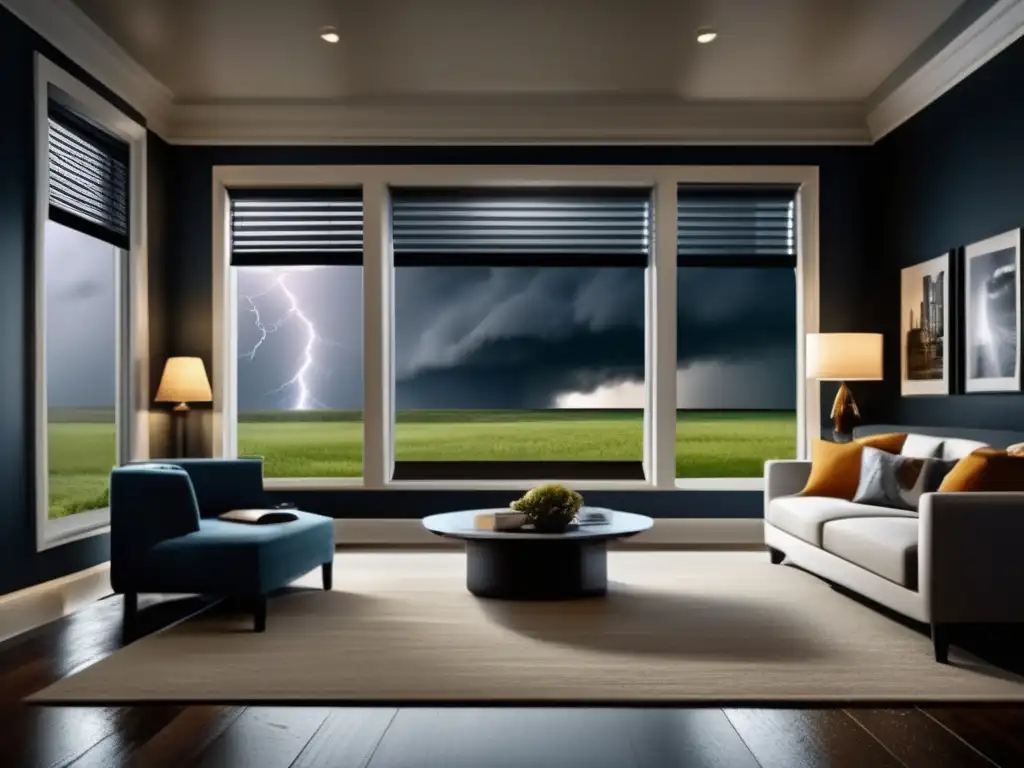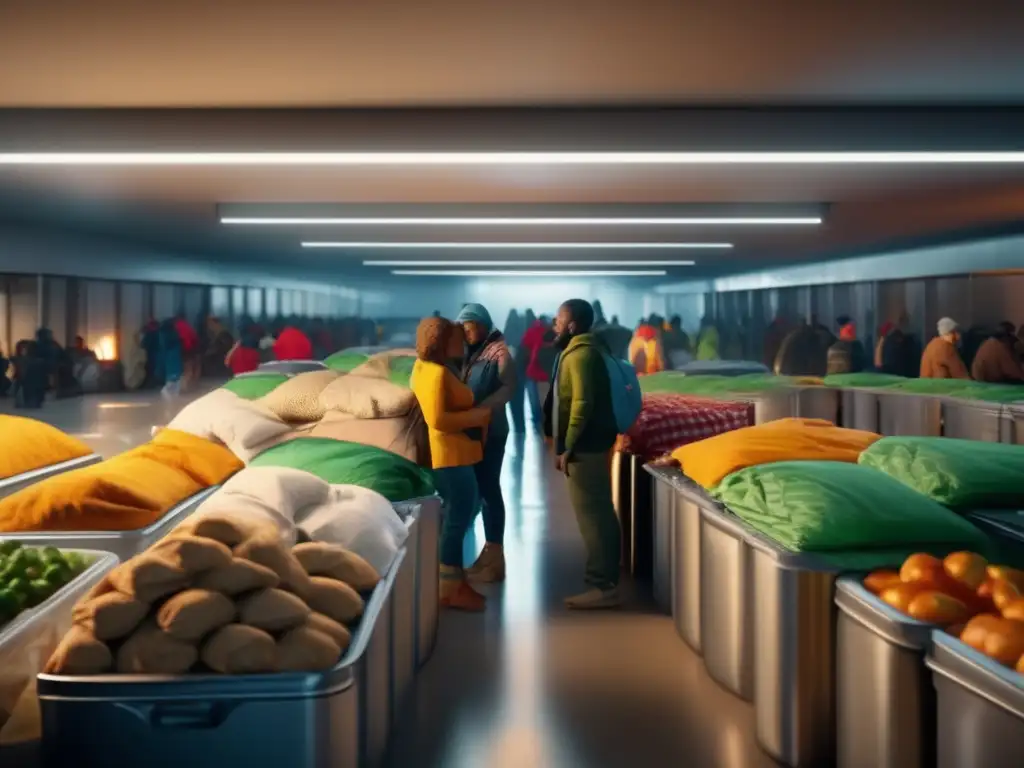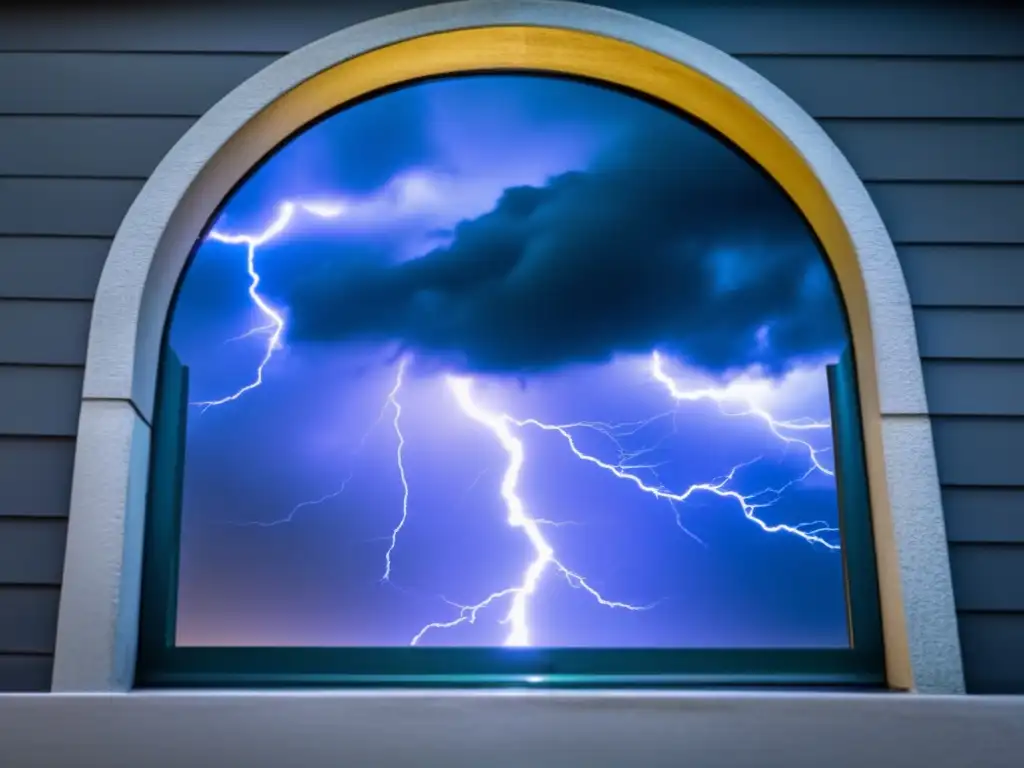Safe And Sound: Choosing The Best Room To Shelter During A Hurricane

Safe and Sound: Choosing the Best Room to Shelter During a Hurricane
Introduction
When a hurricane strikes, it's important that you have a safe place to ride out the storm. Choosing the right room to shelter in can make all the difference between staying safe and being in harm's way. In this article, we'll provide you with some basic knowledge about hurricanes and guide you through choosing the best room to shelter during a hurricane.
The Science Behind Hurricanes

What is a Hurricane?
A hurricane is a tropical cyclone with winds that reach a sustained speed of 74 miles per hour or more. They are usually accompanied by heavy rain, storm surges, and flooding. Hurricanes form over warm ocean waters, and can last for a few days to several weeks.
How Do Hurricanes Form?
Hurricanes form over warm ocean waters when the air above the water becomes saturated with moisture. The warm, moist air rises and cools, and the water vapor condenses into clouds. As the air continues to rise, it creates an area of low pressure near the surface of the ocean. The surrounding higher-pressure air rushes in to fill the void, and the Coriolis effect causes this air to spin counterclockwise in the Northern Hemisphere, and clockwise in the Southern Hemisphere.
Stages of Hurricane Development
There are four stages of hurricane development:
- Tropical Disturbance: A cluster of thunderstorms that move together over warm ocean waters.
- Tropical Depression: When the group of thunderstorms gains enough organization and sustained wind speeds below hurricane speeds (less than 39 mph).
- Tropical Storm: Once the organized system maintains sustained winds between 39 mph and 73 mph, it is considered a tropical storm.
- Hurricane: If the storm continues to organize and maintain sustained winds over 74 mph, it becomes a hurricane and can continue to gain intensity.
Choosing the Best Room to Shelter During a Hurricane

General Guidelines
The room you choose to shelter during a hurricane should be as safe as possible from high winds and flooding. Some things to consider when choosing a room include:
- It should be located on the lowest level of your home
- It should have the fewest windows and doors
- It should be far away from any trees or large objects that could fall on your home
- It should be able to withstand high winds and potential flooding
Interior Rooms
Interior rooms without windows, like bathrooms or closets, are generally the safest to shelter in during a hurricane. These rooms provide the most protection from flying debris and wind damage. The smaller the room, the better, as less air means less pressure. Large rooms and open spaces are more prone to wind damage as they allow for more wind to enter the space.
Basement
If your home has a basement, this can be a good place to shelter during a hurricane. Basements provide good protection from wind and water damage, especially if they are underground. However, it's important to make sure there are no windows or doors that can allow wind and water in. It's also important to note that not all homes have basements, particularly in coastal regions where the water table is high and the soil is sandy.
Garage
The garage may seem like a good place to shelter during a hurricane, but it's typically not safe. Garages are often not built to withstand high winds and can easily collapse or sustain severe damage. Additionally, many garages have windows or doors that can allow wind and water in.
Mobile Homes
If you live in a mobile home, it's important to evacuate to a designated hurricane shelter. Mobile homes are not safe to shelter in during a hurricane due to their lightweight construction and vulnerability to high winds. Even a category 1 storm can lift a mobile home from its foundation and cause severe damage or destruction.
Preparing for a Hurricane

Emergency Kit
It's important to have an emergency kit on hand in case of a hurricane. This should include enough non-perishable food and water to last each person in your household for at least three days, as well as first aid supplies, medications, flashlights, batteries, and important documents.
Evacuation Plan
In addition to choosing the best room to shelter during a hurricane, it's important to have an evacuation plan in case you need to leave your home. This should include knowing your evacuation route, having a packed bag with essential items, and knowing where you will go if you need to evacuate. Stay informed by monitoring local weather updates, and heed any evacuation warnings issued by local authorities.
Frequently Asked Questions

-
Can I shelter in my attic during a hurricane?
No, it's not recommended to shelter in your attic during a hurricane. Attics are not built to withstand high winds, and there is a greater risk of roof collapse or being trapped if the storm causes structural damage.
-
Does it matter what floor my room is on?
Yes, it's best to choose a room on the lowest level of your home. The higher you are in a building, the more wind pressure there is on the structure, making it more vulnerable to collapse.
-
What if I live in a flood-prone area? Which room should I choose?
If you live in an area that is prone to flooding, you should choose a room that is as high up in your home as possible. Additionally, you may need to evacuate to higher ground if flooding becomes severe.
-
Can I shelter in my car during a hurricane?
No, it's not recommended to shelter in your car during a hurricane. Cars are not safe from flying debris or high winds, and can easily be overturned by strong gusts
-
Can I open windows during a hurricane?
No, you should never open windows during a hurricane. This can allow wind and water into your home, causing damage or injury to yourself or others.
Conclusion
Choosing the best room to shelter during a hurricane can make all the difference in keeping you safe during the storm. By following the general guidelines, such as selecting a room on the lowest level of your home with few windows and doors, you can increase your chances of staying safe. It's also important to have an emergency kit and evacuation plan in place, and to stay informed about local weather updates. Remember, the most important thing is to prioritize safety over everything else.
For more information on hurricane preparedness and safety measures, be sure to regularly visit HurricaneInsider.org, your comprehensive source for all things related to hurricanes.
Additional Resources

 Storm Shutters
Storm Shutters Emergency Communication: Staying Connected During A Hurricane
Emergency Communication: Staying Connected During A Hurricane The Essential Documents To Protect During A Hurricane
The Essential Documents To Protect During A HurricaneIf you want to discover more articles similar to Safe And Sound: Choosing The Best Room To Shelter During A Hurricane, you can visit the Hurricane preparedness: category.
Leave a Reply

Articulos relacionados: